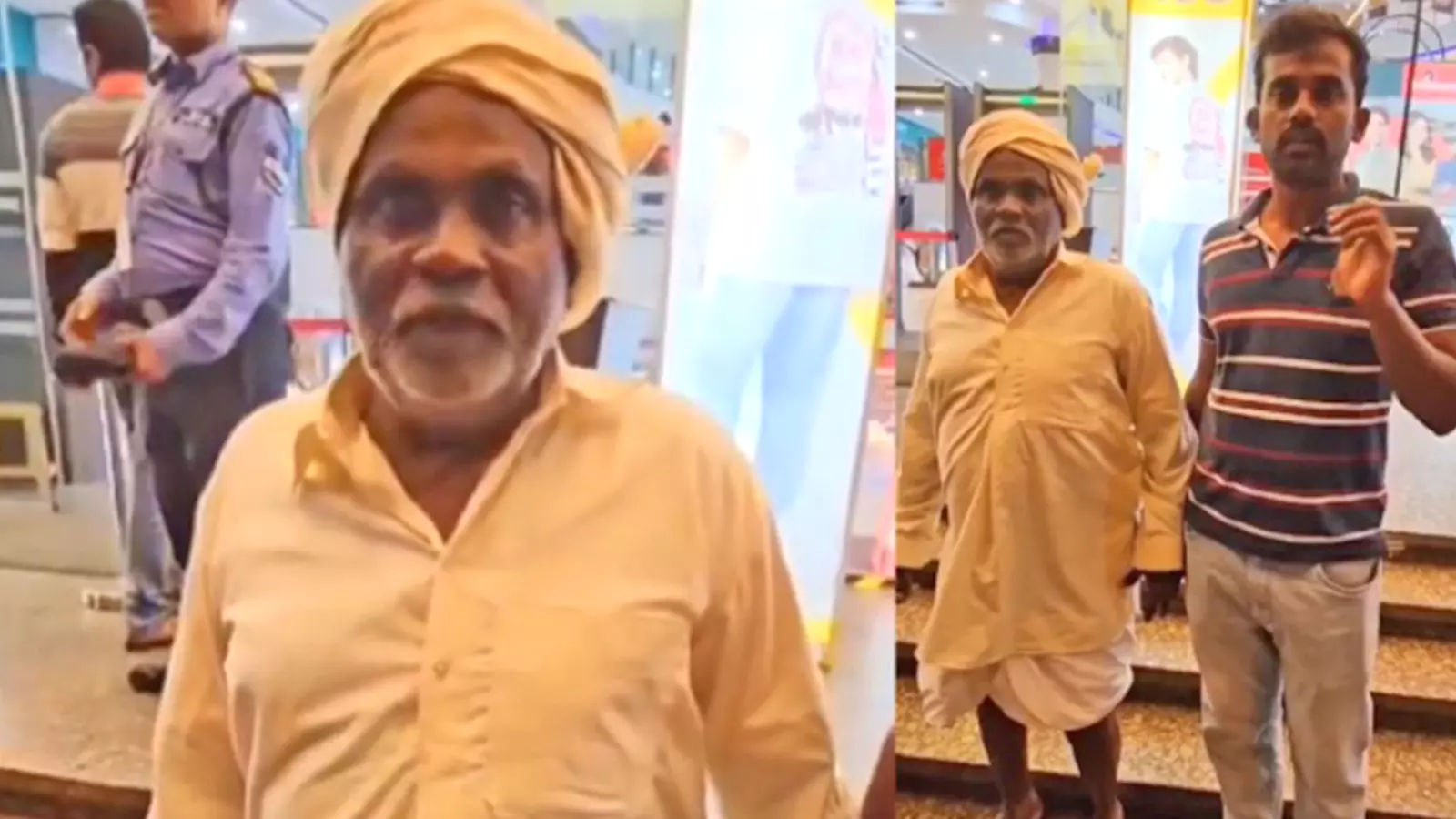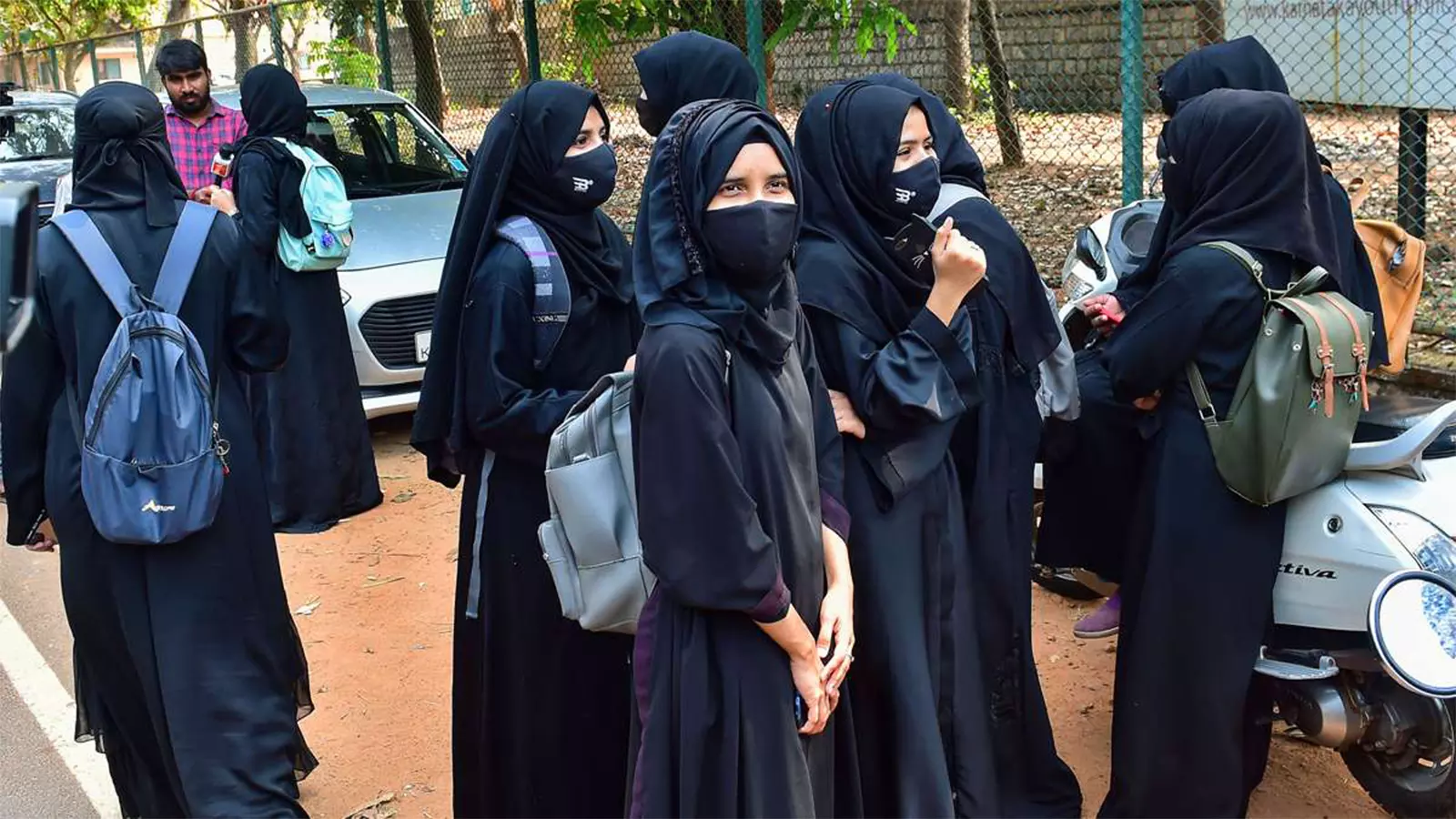
- Home
- India
- World
- Premium
- THE FEDERAL SPECIAL
- Analysis
- States
- Perspective
- Videos
- Sports
- Education
- Entertainment
- Elections
- Features
- Health
- Business
- Series
- In memoriam: Sheikh Mujibur Rahman
- Bishnoi's Men
- NEET TANGLE
- Economy Series
- Earth Day
- Kashmir’s Frozen Turbulence
- India@75
- The legend of Ramjanmabhoomi
- Liberalisation@30
- How to tame a dragon
- Celebrating biodiversity
- Farm Matters
- 50 days of solitude
- Bringing Migrants Home
- Budget 2020
- Jharkhand Votes
- The Federal Investigates
- The Federal Impact
- Vanishing Sand
- Gandhi @ 150
- Andhra Today
- Field report
- Operation Gulmarg
- Pandemic @1 Mn in India
- The Federal Year-End
- The Zero Year
- Science
- Brand studio
- Newsletter
- Elections 2024
- Events
Caste, class, religious bias: When what you wear can put you at risk of being bullied

As his son speaks to the media, Fakeerappa, an elderly farmer from Karnataka’s Haveri district, remains mostly quiet wearing a dejected smile. Fakeerappa had never thought he would face public humiliation and rejection because of his attire.The septuagenarian farmer has been wearing panche, dhoti in the local Kannada language, wrapped around his waist, all his life. A white shirt and a...
As his son speaks to the media, Fakeerappa, an elderly farmer from Karnataka’s Haveri district, remains mostly quiet wearing a dejected smile. Fakeerappa had never thought he would face public humiliation and rejection because of his attire.
The septuagenarian farmer has been wearing panche, dhoti in the local Kannada language, wrapped around his waist, all his life. A white shirt and a white panche have been his identity. His way of life. It has been so for millions like him across the rural belts of the southern state.
A panche may be a piece of cloth for someone, but it is Karnataka’s pride as it represents the culture and tradition of the land and its people. In villages across the southern state and the country, most elderly and middle-aged men wear dhotis, like women wear sarees.

Fakeerappa, an elderly farmer from Karnataka’s Haveri district, was stopped from entering Bengaluru's GT World Mall for wearing a panche.
Who could have smelled trouble in a piece of cloth?
When Fakeerappa in his trademark clothes walked into GT World Mall in Bengaluru to watch a film with his family recently, "chaos commenced". The mall’s security staff stopped the elderly man at the entrance because he was wearing a dhoti. His attire is a definite no-no sartorial choice for a consumer inside a mall glittering in capitalism.
The unsaid rule demands something sophisticated to suit the environment—like a pair of trousers and a shirt perfectly ironed removing the tiniest bit of creases. The farmer was accused of violating the ‘dress code’. What about Fakeerappa's self-respect? His freedom to move freely? Are his rights not being breached?
Is he being targeted as there is no place for a visibly poor farmer in a cosmopolitan setting? For “smart city” Bengaluru, India’s IT hub, panche is not smart enough. It is not something a college-goer or a techie would wear. So, it does not match the vibe of Bengaluru, which is aspirational. It is partly elite and affluent.
Some might argue that a mall is a private enterprise and has the right to set its own rules and regulations but because of thousands of footfalls every day, a mall is as public a space as a park, a library or a museum.
Behind ‘fashion policing’ is caste, class and religious bias
Sylvia Karpagam, a public health researcher and a doctor from Karnataka, told The Federal that the incident was unsurprising.
“These kind of incidents (like the one faced by Fakeerappa) are common across the country. It is very normal in India. We discriminate against people based on caste, class, gender and religion. In gated communities in cities, domestic help, gig workers and drivers are not allowed to use lifts used by their rich and elite residents. This is segregation—separating the rich from the poor, the upper caste from the low caste... The list is endless,” added Karpagam.
Experts say the Fakeerappa episode saw public outrage as “farmers have been romanticized”. After his story went viral on social media, Kannada activists and politicians criticised the mall's management. The mall was punished for insulting the farmer. The government issued an order to shut down the mall for a week.
The farmer's plight was debated at the Karnataka Legislative Assembly where leaders of the ruling Congress and the opposition Bharatiya Janata Party (BJP) unanimously condemned the mall. Otherwise, the same politicians could never come to a consensus on compensating the drought-affected farmers of the state.
History repeats itself?
The incident was reminiscent of Karnataka’s 2022 Hijab Row when hijab (scarf)-wearing Muslim female students were denied entry into educational institutions.
The hijab row was a direct manifestation of everyday hatred, violence and discrimination faced by the Muslim community. It was also a direct attack on the female education of the minority community which is 14 per cent of India’s estimated 1.44 billion population.

In 2022, hijab-wearing Muslim female students were denied entry into educational institutions. Photo: PTI
Since 2014, after Narendra Modi became the prime minister (this is Modi's third term as the head of the country), Muslims have been facing relentless attacks from right-wing groups backed by the ruling BJP. Be it lynching, demolitions of houses or the current controversy over making the names of owners of commercial establishments public so that buyers can identify the religion or caste of the person from whom they are purchasing any goods or services—the everyday violence and belittling of Muslims seems to be never-ending.
The students were curbed from accessing education, their fundamental right, on the premise that they were bringing religion into educational institutions by wearing hijab, a marker for a Muslim woman.
A Delhi-based Muslim woman activist, who does not wish to be identified, said that often she faced scrutiny for wearing hijab. “Wherever I go, scrutinising eyes follow me in the public. It is uncomfortable. It is an attack on my privacy and right to move freely. I have been asked (even by those who claim to be my friends) why I have to wear a hijab. I have been asked to keep my religion at my home by strangers. I avoid answering anyone as I fear attack from them if I contest their statements,” she added.
A few months ago, again in Bengaluru, a dhoti-clad man was stopped by security staff from entering a metro station. These episodes of "disapproval of one's clothes" happen regularly in private and public places. Very few of them go "viral". These incidents are classist and expose the everyday truth of how we as a society treat our poor and their choice of clothing.
Why are women attacked more?
Some come under attack for wearing "modern, western or revealing clothes", others for looking "boorish, unlettered or simpleton" and some others for "being religious". Most often the victims are women. Be it the diktats of khap panchayats (union of villages in north India) asking girls not to wear jeans or use mobile phones to colleges and corporates where the everyday choice of women's clothing is policed.
Atreyee Kar, a writer from Bengaluru, said that in her last job, she went through severe trauma because of the toxic environment in the workplace. “In 2022, I was working for a health news website started by an IT giant. The human resource department had sent us a manual of the dress code and the dos and don'ts to be followed by the employees within the office premises.
"It was pretty exhaustive. Most of the rules were sexist and bizarre. One day, I wore a pair of distressed jeans with a kurta. The next day, an HR employee told me not to wear 'such clothes'. There was also another young female employee who told me that the HR head of the company, a woman who is also a trained lawyer, took pictures of her legs as she was allegedly showing off her body parts."
Kar added that it was not the end. "After working in the company for nine months, I quit my job as the work environment was anti-women and unbearable. At that time, I confronted the HR person (a woman) about her 'not to wear such clothes' comment. She told me I was showing off 'unwanted body parts'. I don't know what that meant but it was demeaning and distressing. I wanted to sue them at a court but I don't have the capital to take on an IT behemoth where women workers are treated like trash."
Fakeerappa (Fakeer in Arabic means a poor person and Appa stands for father in Kannada) —the literal translation of the elderly farmer's name has nothing to do with his reality. He is a father but not "poor" as assumed by the mall and was ridiculed in the name of "dress code". The "traumatic experience" he endured is not only his own. It's a collective experience of many.
